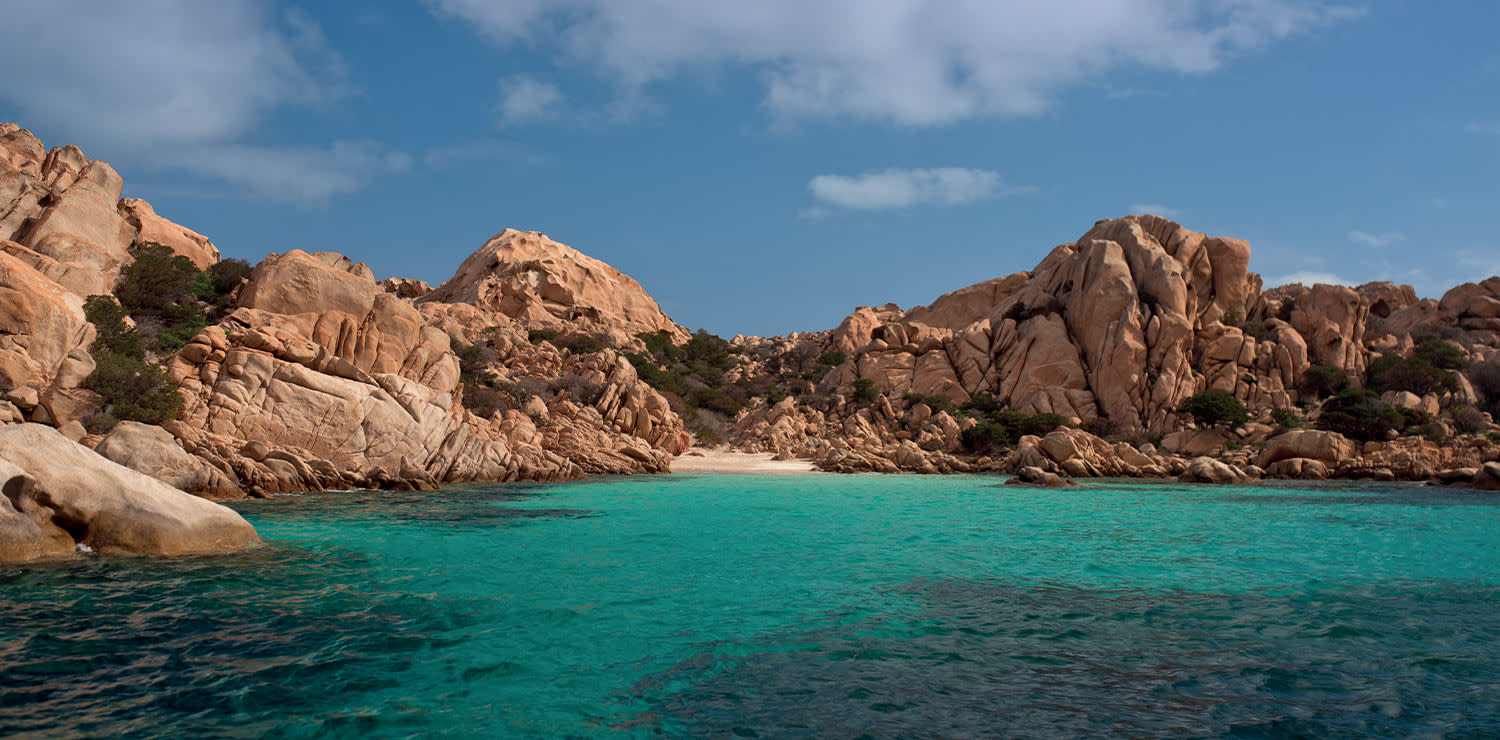The Costa Smeralda®'s most beautiful islands
From Spargi to Budelli: discover all the must-see treasures and their crystal-clear waters
The Emerald Coast® is famous for its dreamy beaches, turquoise waters and breathtaking views. But the beauty of this land does not end there. In its surroundings, in fact, are hidden true precious gems: the islands of the Maddalena Archipelago. A place of enchantment and an unspoiled paradise where nature reigns supreme. Its islands, characterized by rugged coastlines, pristine beaches and crystal-clear seabed, offer a panorama unique in the world (click here to discover the most beautiful beaches; and here to find out how best to reach them).
Located at the eastern end of the Straits of Bonifacio, the archipelago of La Maddalena is famous for its beautiful beaches, numerous natural landings, and Mediterranean scrubland, from which huge granite rocks emerge. The historic center of La Maddalena is a maze of narrow, picturesque streets, where you can find small stores selling local crafts, typical restaurants, and cozy bars. But the real treasure of La Maddalena is its unspoiled nature. Renting a bicycle, you can head to Cala Lunga beach, one of the most beautiful on the island (click here to read our in-depth report on the Maddalena Archipelago).
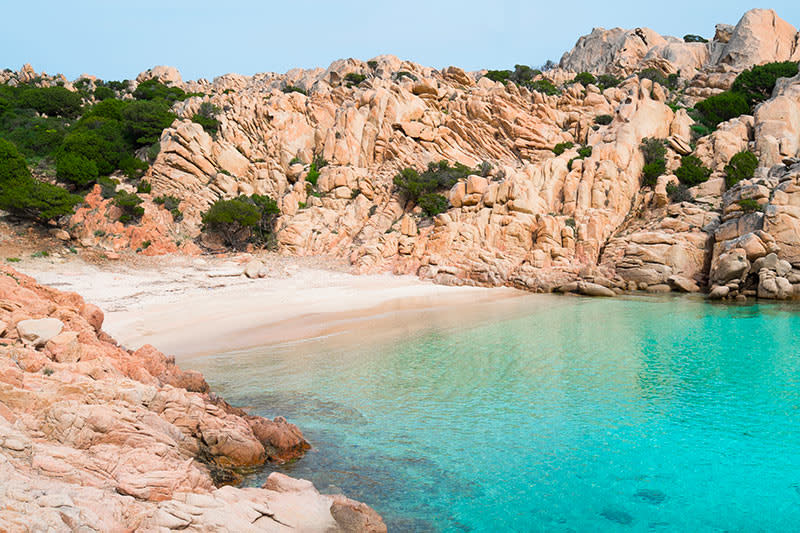 Spiaggia di Cala Coticcio, Isola di Caprera
Spiaggia di Cala Coticcio, Isola di CapreraSpargi
It is a wild and unspoiled island, famous for its Cala Granara beach, considered one of the most beautiful in Italy, is the third largest in the archipelago. It has a coastal development of 11 kilometers and the tip of Guardia Preposti, the highest on the island, reaches an altitude of 153 meters. Granitic in nature, very rich in water and vegetation, it is home to numerous protected species of birds. In the early decades of the 19th century a bandit, Natale Berretta, chased by gendarmes, hid on the island and thus managed to escape imprisonment, but when his innocence was finally proven he decided to stay there with his family raising goats and cows. In the last century it was used only during World War I and World War II with the ruins of fortifications still visible today, among which the best preserved is the Opera Antinave Rubin de Cervin at Punta Zanotto. Various artifacts were recovered from the island's seabed that are now on display at the naval museum in La Maddalena.
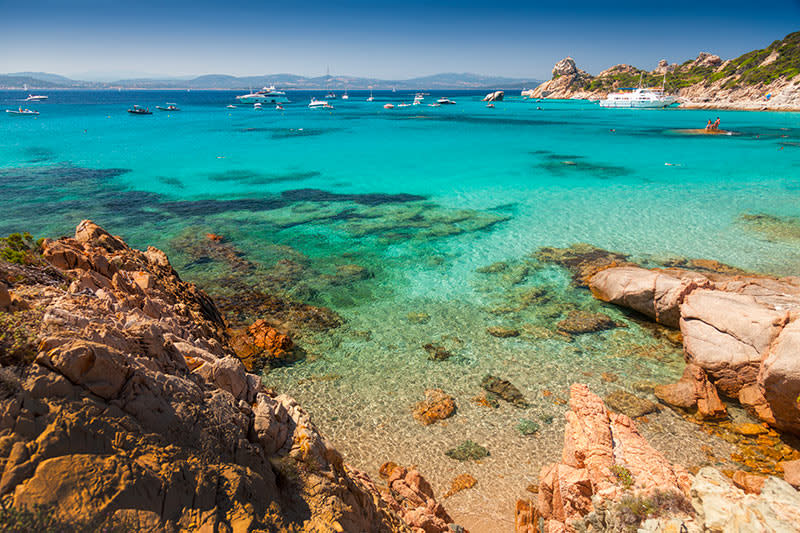 Cala Corsara, Isola di Spargi
Cala Corsara, Isola di SpargiBudelli
It is considered one of the most beautiful islands in the Mediterranean and a symbol of the national park: it is also known abroad because of its famous Pink Beach, which is under a very strict protection regime. Located in Cala di Roto, in the southeastern part of the island, it owes its typical color and name to the shredded fragments of miniacina miniacea, a pink microorganism that lives in posidonia inside shells and seashells, carried ashore by currents. Budelli is one of the most splendid jewels of the Maddalena archipelago. At Cala Roto, where the beach stands, in 1964, Michelangelo Antonioni shot the scene of the little girl's tale in Deserto Rosso, capturing the nature of the place in all its beauty. In 1989, Mauro Morandi from Modena became the sole inhabitant and guardian of the island, which he left permanently on April 26, 2021, making it uninhabited.
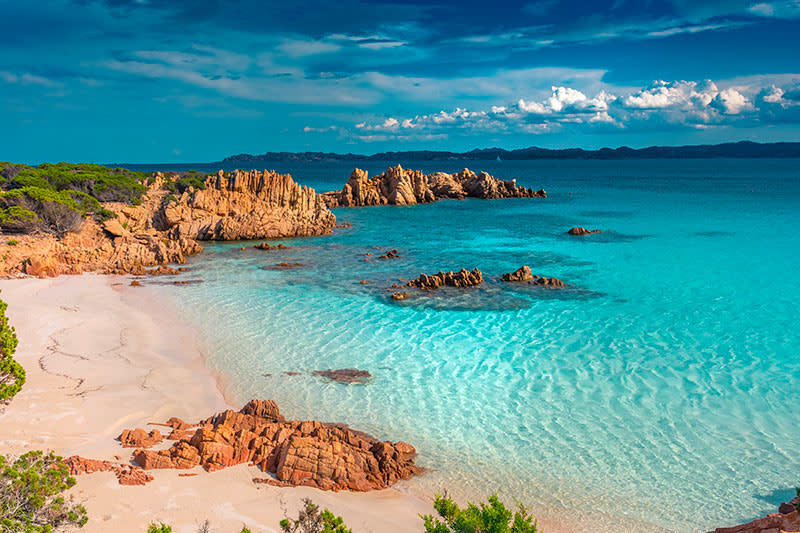 Budelli
BudelliSanta Maria
The northernmost of the jewel-islands that make up the Maddalena Archipelago National Park, in the far northeast of Sardinia, is an island rich in history, where the remains of an ancient fortress and a beautiful beach overlooking the open sea can be found. The small island has an area of two square kilometers, while the perimeter of its coastline measures ten kilometers. The feature that distinguishes it from the other smaller Magdalenian islands is that it is the only permanently inhabited one. Morphology also distinguishes Santa Maria from neighboring islands: it has no relief and the highest point is Guardia del Turco, which barely reaches 49 meters. Along the inland paths are the ruins of a Benedictine monastery built in the first half of the 11th century, a place of isolation and prayer for the monks. Abandoned in the 16th century, in the late 18th century it passed to the Bertoleoni, a family that later also colonized Spargi. In the 19th century the renovated building became the home of a shepherd. Today there are other dwellings in Santa Maria, also used as a summer residence by artists and show business personalities. Then there is the Punta Filetto Lighthouse, from where to see the coastal pearls, particularly Cala Santa Maria and Cala di Fosso.
Mortorio
Seen from above, with its jagged coastline branching out like tiny tentacles, it resembles an octopus suspended over crystal-clear waters, from which it barely protrudes, with its granite mass that does not reach 80 meters above sea level at its highest point and where only Mediterranean scrub and gorse creep through the rocks. This is the island of Mortorio, part of the marvelous Maddalena Archipelago, a place out of time less than 2 miles from Porto Cervo, where the absolute protagonist is unspoiled nature wrapped in unparalleled quiet. An island totally uninhabited, except by birds such as Corsican seagulls and peregrine falcons. On the western side, and thus the one kissed by the setting sun, its rocky profile opens up embracing a beautiful white sand beach that dips, gently sloping, into a sea that seems to be painted, where boats fly placidly. The beach overlooks the neighboring island of Soffi, with which Mortorio forms a kind of small archipelago unto itself, and where one can admire another masterpiece of nature: its four coves known as the 'Pools of Soffi,' thanks to the beauty and tranquility of their waters, soft sand bottom and edges protected by rocks. In order to preserve their natutal beauty, a ban on anchorage and transit has been imposed for the island of Mortorio and Soffi.
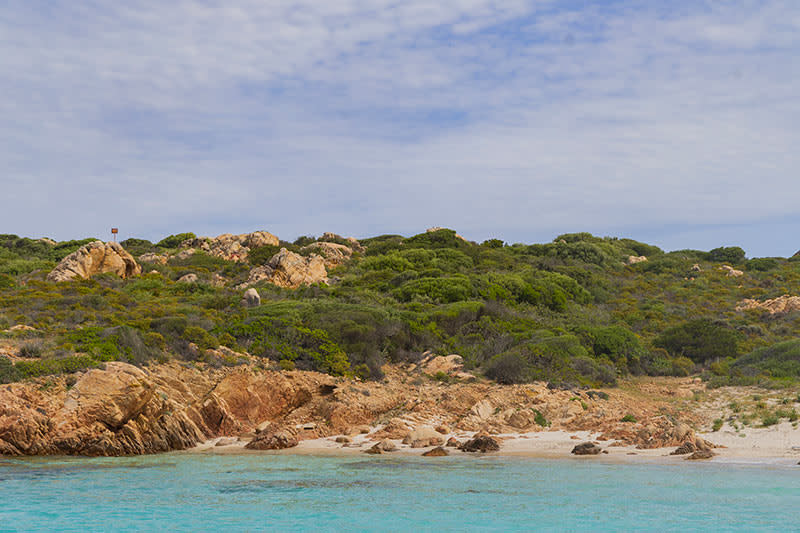 Isola di Mortorio (ph. Dario Garofalo)
Isola di Mortorio (ph. Dario Garofalo)Razzoli
It is the penultimate bastion of Sardinia in the Straits of Bonifacio, bordering Corsica, further north turns out to be only the "twin" island of Santa Maria. Razzoli dominates from the north with its high cliffs the Maddalena Archipelago Park, of which it is the fifth largest island with an area of one and a half square kilometers and a coastal development of more than twelve kilometers. Unmistakable features of Razzoli are its jagged coastline and a mountainous conformation with the highest peak in Mount Cappello, 65 meters high, while what is most fascinating is its history, which holds mysteries that have become increasingly dense and evocative over the centuries. Unspoiled vegetation and marine life take center stage; not surprisingly, among the archipelago's 60 islands and islets, it has the wildest appearance. It is an embankment with its high granite cliffs to the elements of an often rough sea at the northern end of Sardinia. The rocks shaped by sea and wind are true natural sculptures. Some sheltered coves are renowned: Cala Cappello, Cala Noce, Cala Lunga, reachable only by sea and composed of pebbles and fine sand, and other small sandy coves such as Cala Bove marino. In the past, not far from the shoreline, monk seals, last spotted off the cove in 1997, could be seen from here.




